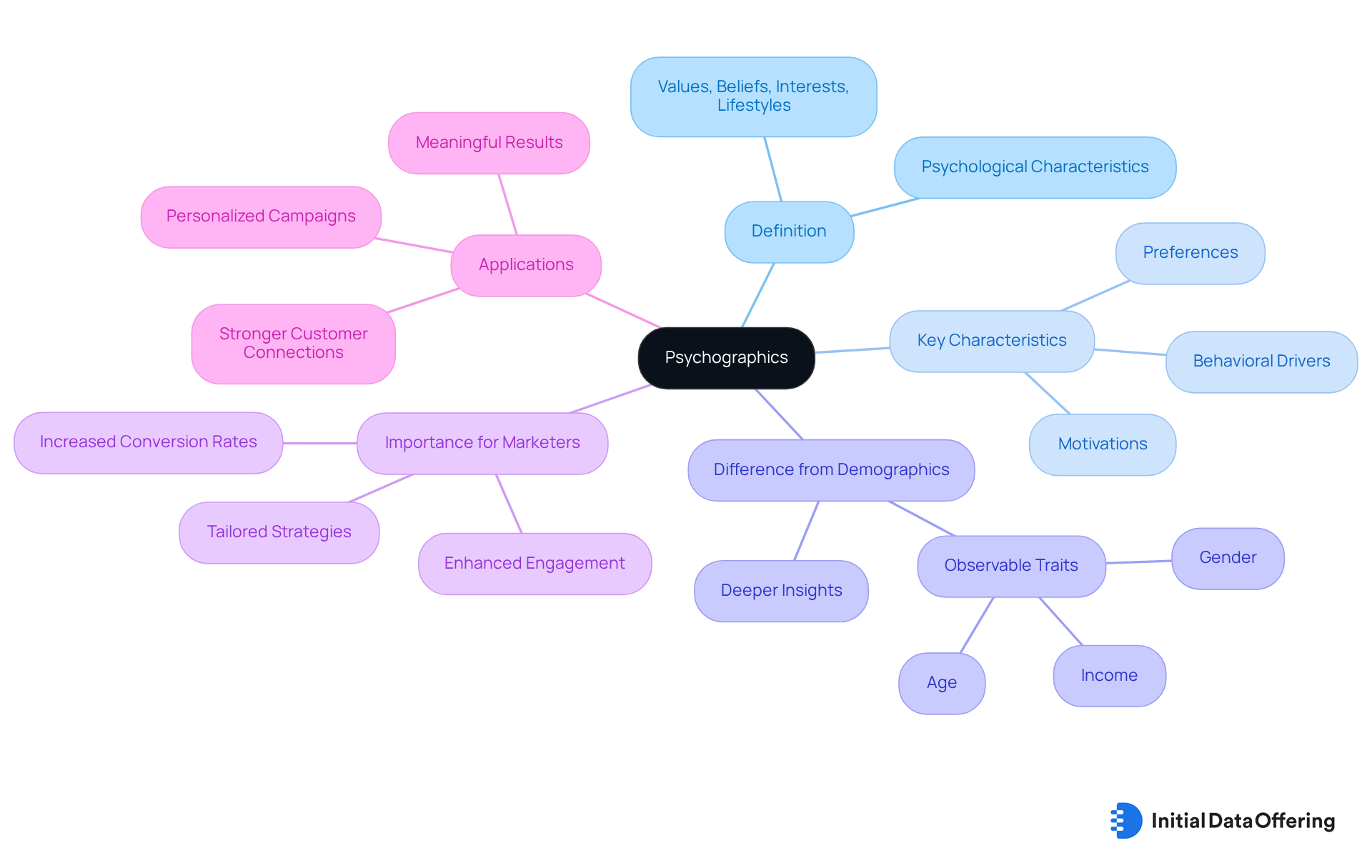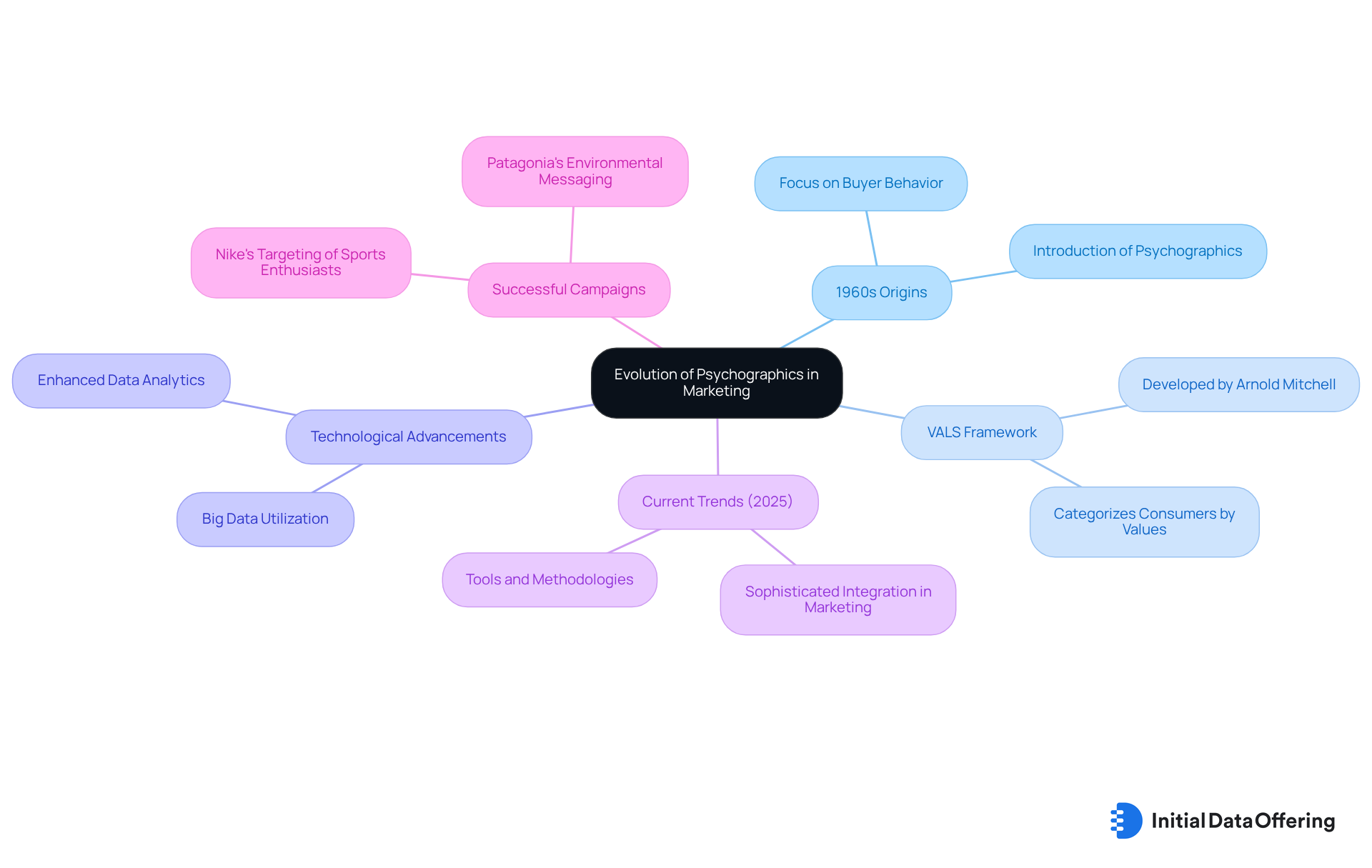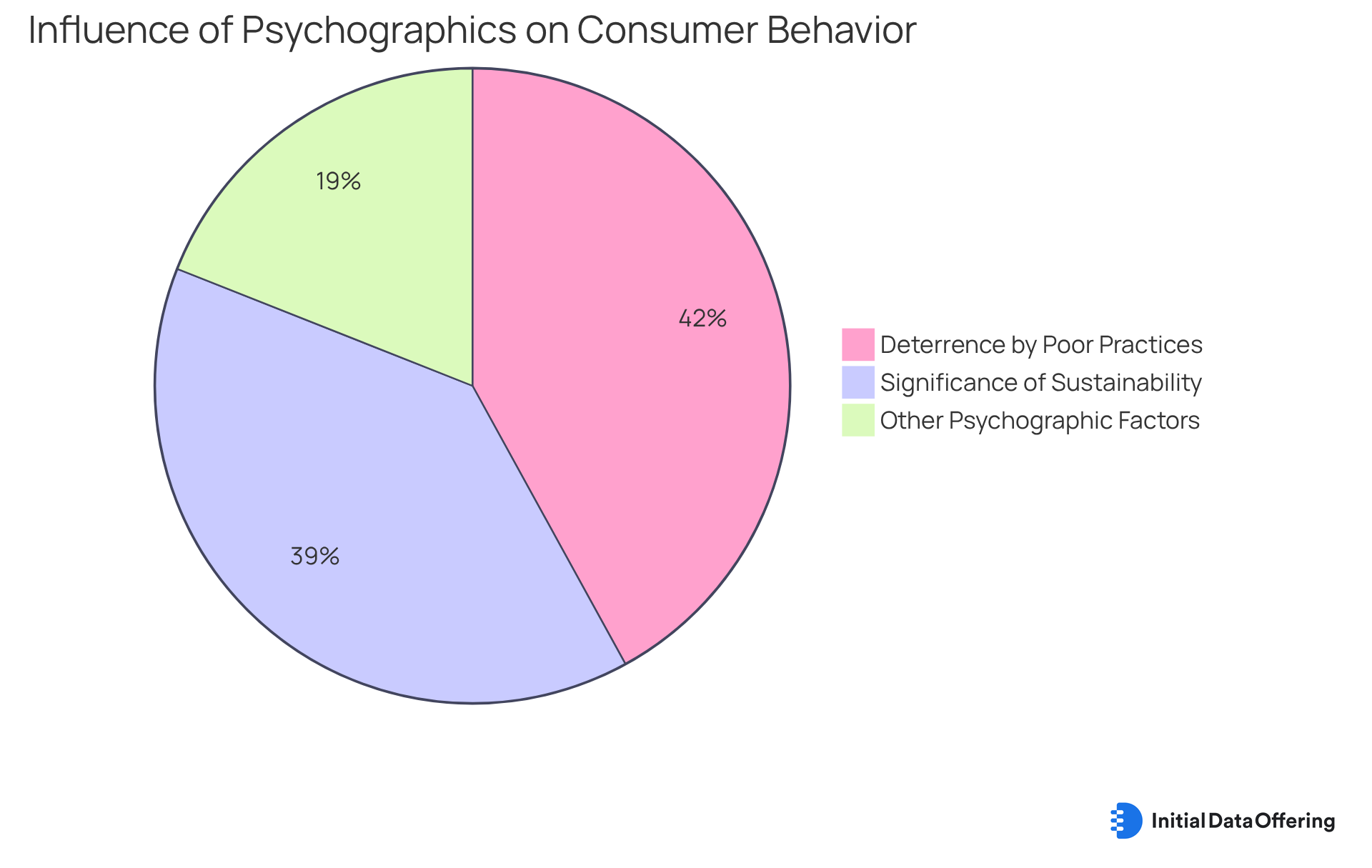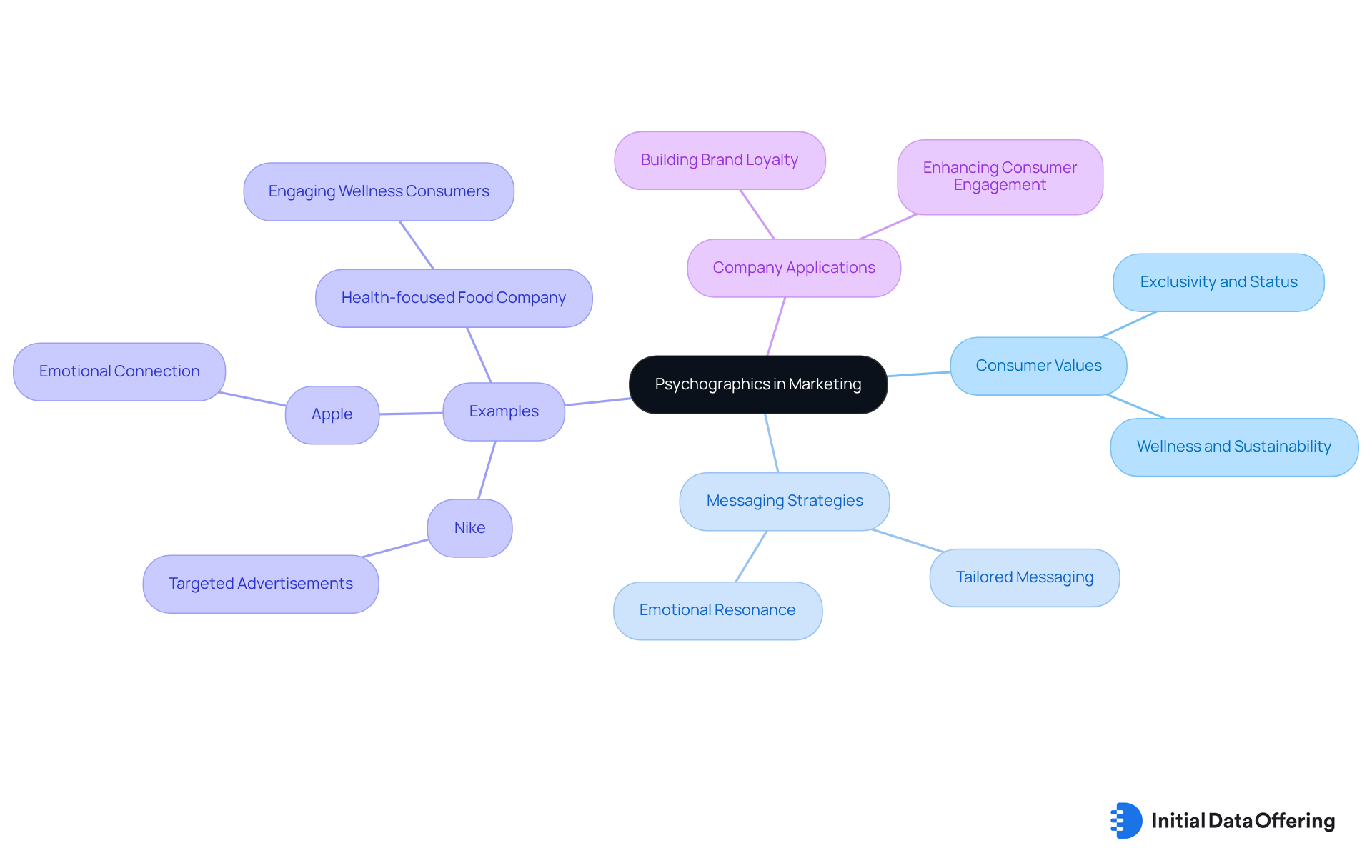What is Psychographics? Definition, Origins, and Key Components

What is Psychographics? Definition, Origins, and Key Components
Overview
Psychographics involves the examination of individuals through their psychological characteristics, including values, beliefs, interests, and lifestyles. This analysis empowers marketers to tailor their strategies for enhanced audience engagement. The evolution of psychographics from basic demographics in the 1960s illustrates its growing importance in crafting targeted marketing campaigns. These campaigns resonate with consumers' motivations and preferences, ultimately fostering stronger connections.
How can understanding psychographics improve your marketing strategies? By leveraging these insights, marketers can create more effective outreach that aligns with what consumers genuinely value.
Introduction
Psychographics provides a compelling perspective on consumer behavior, moving beyond conventional demographic classifications to uncover the underlying motivations and preferences that influence purchasing choices. By analyzing values, beliefs, interests, and lifestyles, marketers can develop customized strategies that resonate with distinct audience segments. This approach not only enhances engagement but also increases conversion rates.
However, how can businesses effectively leverage psychographic insights to build stronger connections with their customers in a fiercely competitive market?
Define Psychographics: Understanding Its Role in Marketing
What is psychographics is the examination of individuals based on their psychological characteristics, including values, beliefs, interests, and lifestyles. This approach differs from demographics, which categorize individuals based on observable traits such as age, gender, and income. Instead, psychographics delves deeper into the motivations and preferences that drive behavior.
For marketers, understanding what is psychographics is crucial. By leveraging this insight, they can tailor their strategies to resonate with specific audience segments. This targeted approach ultimately enhances engagement and increases conversion rates. How can you apply psychographic insights to better connect with your audience?
In summary, what is psychographics not only enriches the understanding of consumer behavior but also empowers marketers to create more effective, personalized campaigns. By focusing on psychological factors, businesses can foster stronger connections with their customers and drive meaningful results.

Trace the Origins: The Evolution of Psychographics in Marketing
The concept of what is psychographics emerged in the 1960s as marketers sought a deeper understanding of buyer behavior that extended beyond basic demographics. Arnold Mitchell was instrumental in popularizing this term through his creation of the Values and Lifestyles (VALS) framework, which categorizes individuals based on their values, attitudes, and lifestyle choices. has allowed marketers to segment audiences with greater precision by understanding what is psychographics, the underlying motivations that drive purchasing decisions.
Over the decades, psychographics have evolved significantly, largely due to advancements in data analytics and technology. By harnessing big data, marketers can now collect and analyze extensive insights about individuals, resulting in a more nuanced comprehension of their preferences and behaviors. This evolution has enhanced promotional efforts, enabling brands to craft tailored campaigns that resonate with specific audience segments.
As we approach 2025, the integration of psychographic data into promotional strategies has become increasingly sophisticated. Marketers utilize a variety of tools and methodologies to analyze what is psychographics, which provides a more comprehensive view of target audiences. Historical examples, such as the successful campaigns of brands like Nike and Patagonia, illustrate how psychographic insights can drive effective promotional strategies by aligning brand messaging with the principles and lifestyles of buyers.
In summary, the development of what is psychographics in marketing reflects a continuous adaptation to evolving buyer landscapes and technological advancements. This underscores its critical role in shaping effective marketing strategies that resonate with today's diverse audiences.

Identify Key Components: Characteristics of Psychographics
Understanding what is psychographics—values, attitudes, interests, and lifestyles—plays an essential role in influencing buying behavior.
- Values indicate what individuals prioritize in their lives, such as sustainability or innovation. Notably, 78% of individuals recognize the significance of sustainability in their buying choices.
- Attitudes reflect individuals' feelings towards products, brands, or social issues, influencing their loyalty and trust; for instance, 84% of individuals would be deterred by brands with poor environmental practices.
- Interests disclose what individuals enjoy during their leisure time, while lifestyles depict their daily habits and activities.
Understanding what is psychographics allows marketers to create that guide product development and promotional strategies.
For example, companies that synchronize their products with customer principles, such as eco-friendliness, can boost engagement and propel sales. This is evident in the rising market share of sustainable items, which has increased by 3.3% since 2015. Understanding what is psychographics allows marketers to craft targeted campaigns that resonate with their audience. Ultimately, this approach leads to improved customer satisfaction and loyalty.
How might these insights shape your marketing strategies? Consider the implications of aligning your products with consumer values to foster deeper connections.

Examine Real-World Applications: Examples of Psychographics in Marketing
Understanding what is psychographics is essential in shaping promotional strategies across diverse industries. They provide valuable insights into consumer values and preferences, which is essential for understanding what is psychographics, enabling companies to tailor their messaging effectively. For instance, a premium label might target individuals who value exclusivity and status, utilizing what is psychographics data to craft messages that resonate with these attributes. This approach not only enhances brand perception but also fosters a deeper connection with the target audience.
Similarly, a health-focused food company can leverage what is psychographics in order to engage consumers who prioritize wellness and sustainability. By emphasizing these attributes in their marketing campaigns, they can attract and retain customers who align with these values. Companies like Nike and Apple exemplify the effective use of psychographic data, creating targeted advertisements that resonate emotionally with their audiences. This strategy not only drives brand loyalty but also enhances consumer engagement, ultimately benefiting the company's bottom line.
How can your organization utilize what is psychographics to refine its marketing strategies? By understanding the underlying motivations of your target audience, you can create campaigns that speak directly to their values and preferences. This approach not only improves the effectiveness of your marketing efforts but also builds stronger relationships with your customers.

Conclusion
Understanding psychographics is essential for marketers aiming to connect with their audience on a deeper level. By exploring the psychological characteristics that influence consumer behavior—such as values, beliefs, interests, and lifestyles—businesses can create more tailored and effective marketing strategies. This approach enhances engagement and drives higher conversion rates, underscoring the significance of psychographics in modern marketing.
The article highlights the evolution of psychographics since its inception in the 1960s, showcasing how advancements in data analytics have transformed the way marketers understand their target audiences. Key components such as values, attitudes, interests, and lifestyles play a crucial role in shaping consumer decisions. For instance, real-world applications exemplified by brands like Nike and Patagonia demonstrate how aligning marketing messages with consumer values can lead to stronger brand loyalty and increased sales.
Incorporating psychographic analysis into marketing strategies is not just beneficial—it's imperative for success in a competitive landscape. By recognizing and leveraging the psychological motivations behind consumer behavior, marketers can foster meaningful connections with their audience. Embracing this approach can ultimately lead to more impactful campaigns that resonate with consumers, driving both satisfaction and loyalty. How might your marketing strategies evolve by integrating psychographic insights?
Frequently Asked Questions
What is psychographics?
Psychographics is the examination of individuals based on their psychological characteristics, including values, beliefs, interests, and lifestyles.
How does psychographics differ from demographics?
Unlike demographics, which categorize individuals based on observable traits such as age, gender, and income, psychographics delves deeper into the motivations and preferences that drive behavior.
Why is understanding psychographics important for marketers?
Understanding psychographics is crucial for marketers because it allows them to tailor their strategies to resonate with specific audience segments, enhancing engagement and increasing conversion rates.
How can psychographic insights be applied to connect with an audience?
Marketers can apply psychographic insights by using the understanding of consumer behavior to create more effective, personalized campaigns that foster stronger connections with their customers.
What are the benefits of focusing on psychographics in marketing?
Focusing on psychographics enriches the understanding of consumer behavior and empowers marketers to drive meaningful results through targeted and personalized marketing efforts.